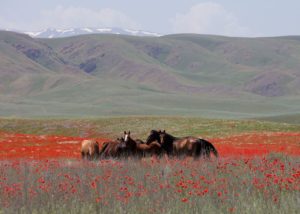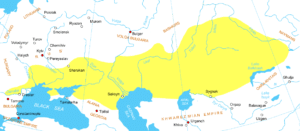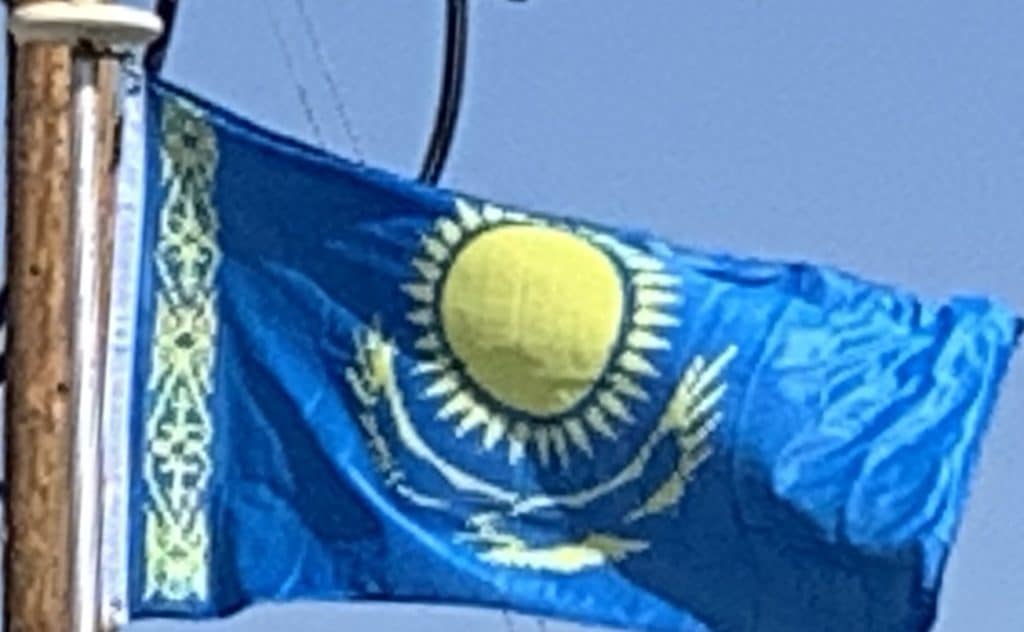The Kazakh language is the state language, and Russian has equal official status for all levels of administrative and institutional purposes. Kazakhstan is a member of the United Nations (UN), WTO, CIS, the Shanghai Cooperation Organization (SCO), the Eurasian Economic Union, CSTO, OSCE, OIC, CCTS, and TURKSOY.
History:
Pre-History:
Kazakhstan has been inhabited since the Paleolithic era. Pastoralism developed during the Neolithic, as the region’s climate and terrain are best suited for a nomadic lifestyle.

The Kazakh territory was a key constituent of the Eurasian trading Steppe Route, the ancestor of the terrestrial Silk Roads. Archaeologists believe that humans first domesticated the horse (i.e. ponies) in the region’s vast steppes. During recent prehistoric times, Central Asia was inhabited by groups such as the possibly Proto-Indo-European Afanasievo culture, later early Indo-Iranians cultures such as Andronovo, and later Indo-Iranians such as the Saka and Massagetae. Other groups included the nomadic Scythians and the Persian Achaemenid Empire in the southern territory of the modern country. In 329 BC, Alexander the Great and his Macedonian army fought in the Battle of Jaxartes against the Scythians along the Jaxartes River, now known as the Syr Darya along the southern border of modern Kazakhstan.
Kazakh Khanate:
The Cuman entered the steppes of modern-day Kazakhstan around the early 11th century, where they later joined with the Kipchak and established the vast Cuman-Kipchak confederation. While ancient cities Taraz (Aulie-Ata) and Hazrat-e Turkestan had long served as important way-stations along the Silk Road connecting Asia and Europe, true political consolidation began only with the Mongol rule of the early 13th century. Under the Mongol Empire, the largest in world history, administrative districts were established. These eventually came under the rule of the emergent Kazakh Khanate (Kazakhstan).

Throughout this period, traditional nomadic life and a livestock-based economy continued to dominate the steppe. In the 15th century, a distinct Kazakh identity began to emerge among the Turkic tribes, a process which was consolidated by the mid-16th century with the appearance of the Kazakh language, culture, and economy.
Nevertheless, the region was the focus of ever-increasing disputes between the native Kazakh emirs and the neighboring Persian-speaking peoples to the south. At its height, the Khanate would rule parts of Central Asia and control Cumania. By the early 17th century, the Kazakh Khanate was struggling with the impact of tribal rivalries, which had effectively divided the population into the Great, Middle and Little (or Small) hordes (jüz). Political disunion, tribal rivalries, and the diminishing importance of overland trade routes between east and west weakened the Kazakh Khanate. Khiva Khanate used this opportunity and annexed Mangyshlak Peninsula. Uzbek rule there lasted two centuries until the Russian arrival.
During the 17th century, the Kazakhs fought Oirats, a federation of western Mongol tribes, including the Dzungar. The beginning of the 18th century marked the zenith of the Kazakh Khanate. During this period the Little Horde participated in the 1723–1730 war against the Dzungar Khanate, following their “Great Disaster” invasion of Kazakh territories. Under the leadership of Abul Khair Khan, the Kazakh won major victories over the Dzungar at the Bulanty River in 1726, and at the Battle of Anrakay in 1729.
